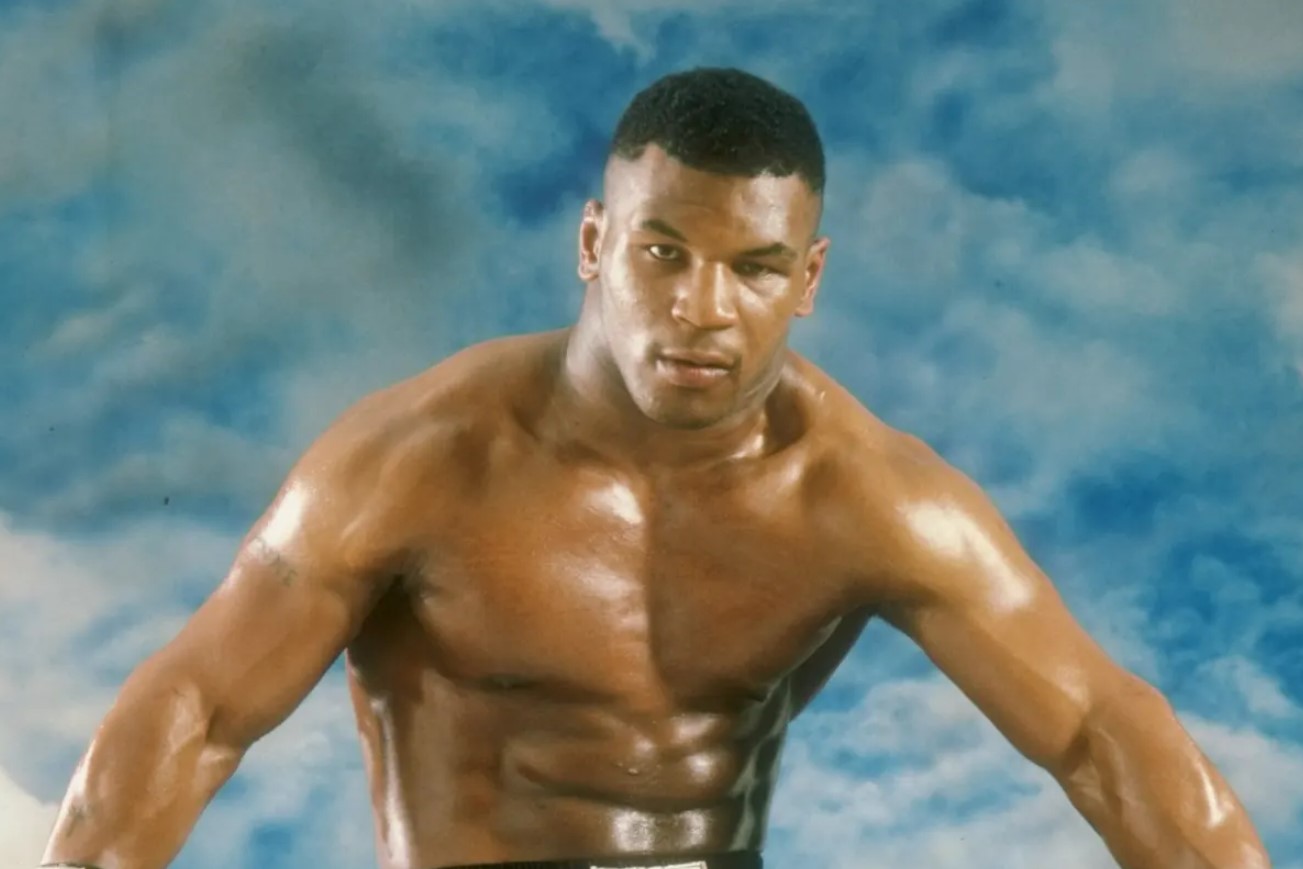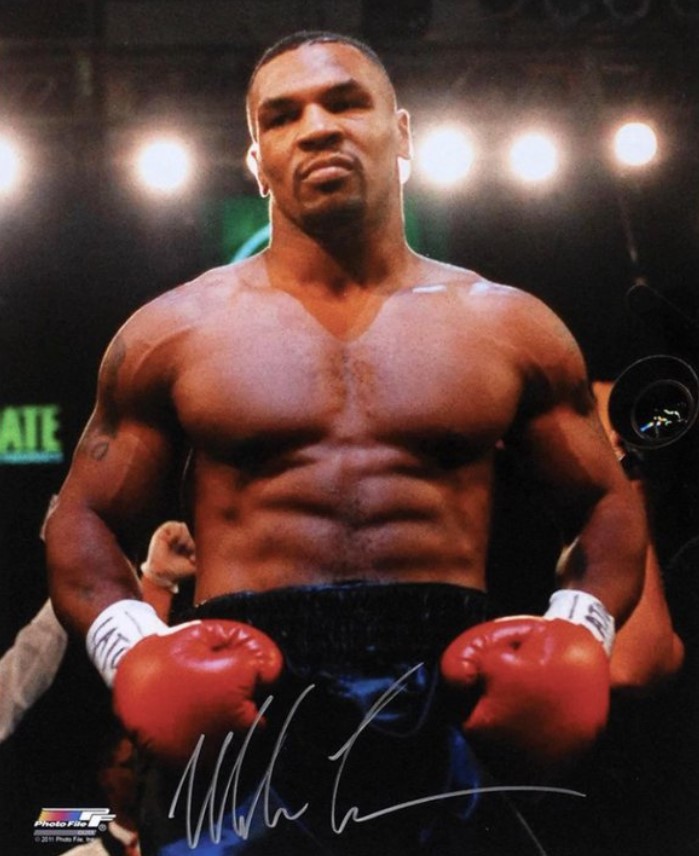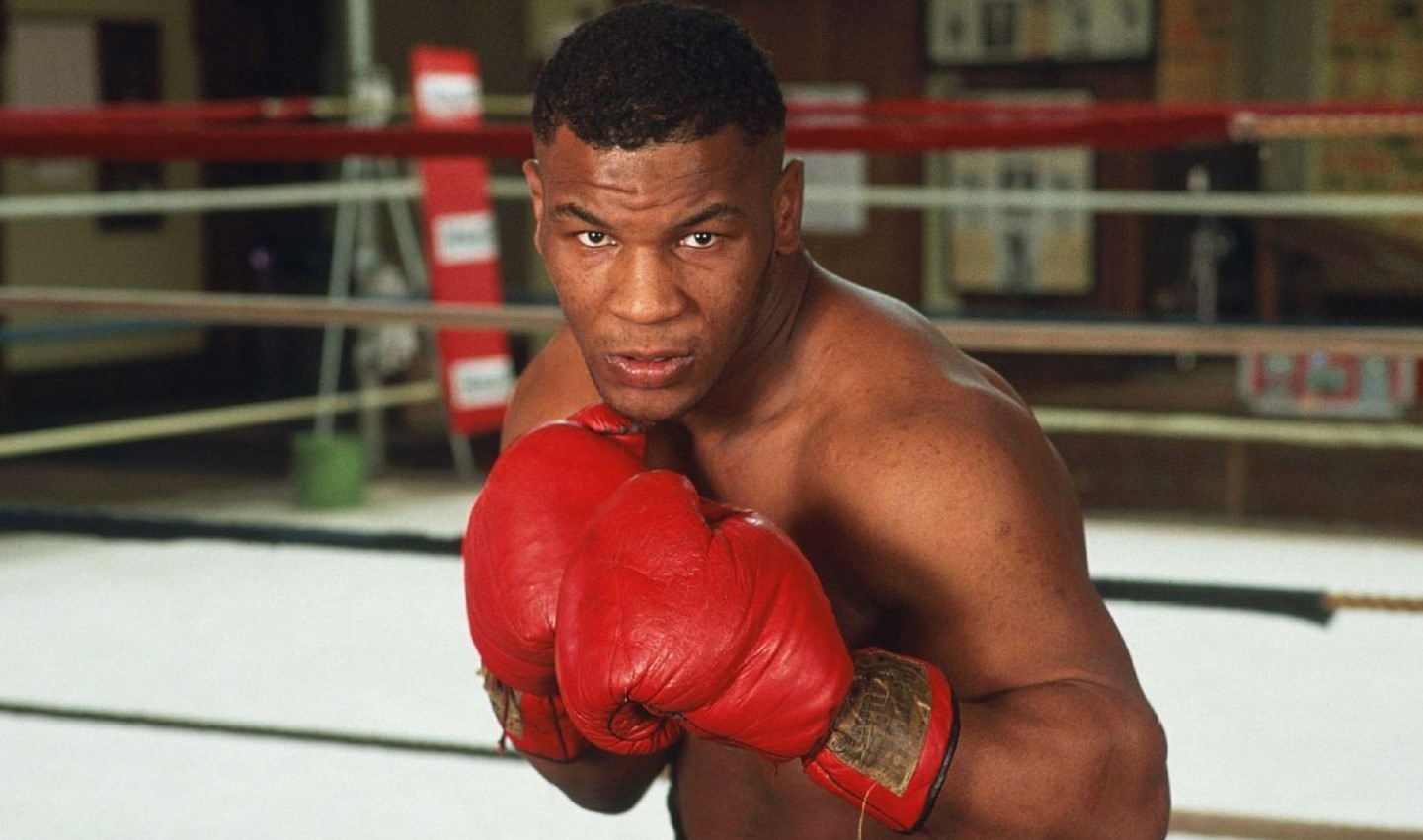Mike Tyson is one of the most iconic and formidable figures in boxing history. Known for his incredible strength, speed and ferocity in the ring, Tyson redefined the heavyweight division and left an indelible mark on the sport. His journey from a troubled youngster to the youngest heavyweight champion in history is a testament to his talent, determination and resilience.
Brief mention of his early life and rise to fame
Mike Tyson younger rise to fame was meteoric. His story, from his troubled childhood in Brooklyn to his meteoric rise in the boxing world, is inspiring and compelling. By the age of 20, Tyson had already achieved what many boxers strive for all their lives, becoming a famous man and a symbol of greatness in the sport.
Mike Tyson’s birth and family background
Mike Tyson was born on June 30, 1966 in Brooklyn, New York. He grew up in Brownsville, a neighborhood known for its high crime rate and tough environment. Tyson’s early life was marked by instability: his father abandoned the family when Tyson was very young, leaving his mother, Lorna Mae Smith, to raise him and his siblings alone.

Challenges faced during his childhood, including living in a tough neighborhood
Mike Tyson faced challenges during his childhood, living in a tough neighborhood in Brownsville, Brooklyn. At a very early age, he was surrounded by neighborhoods and crime, which left a deep mark on his future. He often got into trouble in his youth, getting involved in street fights and petty germs. Mike Tyson young 13 was arrested more than 30 times. However, it was during this difficult period that he started boxing, which gave him a life-changing experience. Under the guidance of trainer Casa D’Amato, Tyson was able to achieve success and success in sports achievements, which was the first step towards a classical career.
Key figures in his early life, such as his mother and early mentors
Despite the challenges, several key figures played a crucial role in Mike Tyson young life. His mother, Lorna, provided him with stability, while mentors such as Bobby Stewart and Cus D’Amato saw potential in young Tyson and set him on a bright path.
How Tyson got introduced to boxing
Young Mike Tyson was introduced to boxing by fate. While in a juvenile detention center, he met Bobby Stewart, a former boxer and counselor, who noticed Tyson’s raw talent and introduced him to the sport. Stewart’s influence was crucial in guiding young Mike Tyson on a disciplined path in boxing.
Early training and the influence of Bobby Stewart, a juvenile detention center counselor
Under Stewart’s guidance, Mike Tyson young began to train seriously, channeling his energy and aggression into boxing. Stewart taught him the basics and organized training at the Catskill Boxing Club, where Tyson’s skills quickly developed. Stewart’s belief in Tyson’s potential laid the foundation for his future success.
First experiences in the boxing gym and early amateur fights
Mike Tyson’s first experiences in the boxing gym were transformative. He quickly made a name for himself with his speed and power, winning convincing victories in his first amateur fights. These successes caught the attention of renowned boxing trainer Cus D’Amato, who became Tyson’s mentor and father.
Meeting Cus D’Amato and the beginning of their relationship
Meeting Cus D’Amato was a turning point for Mike Tyson young. D’Amato saw not only Tyson’s physical prowess, but also his potential for greatness. He took Tyson under his wing, providing not only training, but also the guidance and stability that was sorely lacking in Tyson’s life.
D’Amato’s role in shaping Tyson’s career and personal life
Cass D’Amato played a crucial role in shaping both Tyson’s career and personal life. He instilled in Tyson discipline, confidence and a deep understanding of the sport. D’Amato’s psychological approach to training, emphasizing the importance of mental strength and strategy, was instrumental in Tyson’s development as a boxer.
Young Mike Tyson 13 years old when he met Kasa D’Amato. At that time, Tyson was sent to Tryon School for Boys, a reformatory in New York State, where his boxing talent was noticed by boxing trainer Bobby Stewart. Stewart introduced Tyson to Kasom D’Amato, who later became his mentor and played a key role in his life and career.
Training regimen and psychological preparation under D’Amato’s guidance
Under D’Amato’s guidance, Tyson underwent a strict training regimen. It included not only physical training, but also psychological preparation. D’Amato taught Tyson the importance of mental toughness, helping him develop the fierce, intimidating personality that became his trademark in the ring.
Highlights of Tyson’s amateur boxing career
Mike Tyson young amateur boxing career has been marked by many highlights and rapid progress. He won gold medals at the 1981 and 1982 Youth Olympic Games, demonstrating his knockout power by finishing several fights in the first round. These achievements were the basis for his transition to professional boxing.
Key fights and tournaments
Mike Tyson, a bright boxing star, left behind a legacy rich in exceptional fights and famous tournaments. His rise to the top began with a brilliant victory at the Golden Gloves tournament, where he impressed everyone with his indomitable power and impeccable technique. The most iconic moment of his career was his fight with Trevor Berbick in 1986, when Tyson, at just 20 years old, became the youngest heavyweight champion of the world. In 1988, he gained his dominance with crushing victories over Larry Holmes and Michael Spinks, becoming the overall champion. His epic bouts with Ivander Holyfield and Lennox Lewis, despite controversial moments, are written in championship letters in boxing history, demonstrating not only his outstanding skills but also his will to win.
Transition from amateur to professional boxing
Mike Tyson’s transition from amateur to professional boxing was the beginning of his rapid rise to world fame. Already at a young age, he demonstrated outstanding abilities at amateur tournaments such as the Golden Gloves, gaining trends and respect. However, the real turning point came in 1985 when Tyson made his professional ring debut.
Under the guidance of legendary trainer Casa D’Amato, he quickly adapted to a new environment that emphasized endurance and knockout power punches. Tyson’s first professional fights ended in crushing victories, and his impressive knockout streak instantly caught the attention of the boxing community. Mike Tyson young photos often appear in the media, showing his strength and determination, heralding his future as one of the most formidable champions in boxing history.
Tyson’s professional debut and early fights
Mike Tyson’s professional debut was nothing short of spectacular. After his first win over Hector Mercedes, Tyson continued to rise up the ranks with a series of knockout victories. His aggressive style and unrelenting power quickly made him one of the leaders of the heavyweight division.
Rapid rise through the ranks with a series of knockout victories
Tyson’s rise through the professional ranks was rapid and inexorable. He won his first 19 professional fights by knockout, many of them in the first round. This incredible streak not only enhanced his reputation, but also struck fear into the hearts of his opponents.
Key early fights and opponents
Mike Tyson’s key early fights played a key role in establishing his classic career. Beginning his journey in March 1985, Tyson was the first to fight as a professional and ruthless fighter. His first opponents, such as Hector Mercedes and Trent Singleton, were knocked out in the first rounds, which became Tyson’s calling card. However, the significant tests were fights against more experienced boxers such as James Tillis and Mitch Green. Each victory solidified his legend and brought him closer to winning the heavyweight title.

Becoming the Youngest Heavyweight Champion
The defining moment in Mike Tyson young career came on November 22, 1986, when he faced Trevor Berbick for the WBC heavyweight title. In a dominant fight, Tyson knocked out Berbick in the second round, becoming the youngest heavyweight champion in history at the age of just 20.
The fight against Trevor Berbick and winning the WBC heavyweight title
The fight against Trevor Berbick on November 22, 1986 was a turning point in Mike Tyson’s career and made boxing history. On that day Tyson, at only 20 years old, became the youngest world heavyweight champion of the world, winning the WBC title. Tyson was in complete control of the fight: his aggressive style and powerful punches left Berbick no chance. At the end of the second round, Tyson knocked Berbick out, demonstrating his unrivaled power and swiftness. This victory not only brought Tyson the coveted championship belt, but also ensured his reputation as one of the most formidable fighters in boxing history.
The significance of becoming the youngest heavyweight champion in history at age 20
Becoming the youngest heavyweight champion in history at the age of 20 was a significant success and an important moment in boxing history. This record-breaking victory was not only a testament to Tyson’s extraordinary talent and work ethic, but also marked a new era in the sport. Tyson’s victory over Trevor Berbick to win the WBC heavyweight title on November 22, 1986, began his reign that turned the heavyweight division upside down. His achievement demonstrated that age and experience can be trumped by strength, skill and determination, changing the expectations of young athletes in the sport.
Media attention and public reaction to his achievement
The media and public reaction to Tyson’s historic victory was sensational. The world was mesmerized by the sight of a young, powerful and seemingly unstoppable force emerging on the heavyweight boxing scene. Media outlets around the world celebrated Tyson’s achievement, with headlines praising his skill and potential. Young Mike Tyson photos filled the front pages, showcasing his ferocious style and undeniable power. Tyson’s ability to land spectacular knockouts instantly made him a fan favorite. The public was captivated by his energy and charisma, and his fights became major sporting events attracting significant audiences. Tyson’s rise to fame was meteoric, and he quickly became a household name, transcending boxing to become a global icon.
Analysis of Tyson’s fighting style and techniques during his early career
Mike Tyson young early career was characterized by a distinctive and highly effective fighting style that set him apart from his contemporaries. Training under Cusa D’Amato, Tyson perfected the “peek-a-boo” style, which involved a defensive stance with his hands raised high to protect his face, combined with head movement and fast, powerful punches. This style allowed Tyson to quickly shorten his distance and deliver explosive combinations, often stunning opponents with his aggressive approach. His ability to miss punches and parry them with crushing power was a key element to his success. Tyson’s repertoire included powerful hooks and uppercuts, which he delivered with remarkable speed and accuracy. His relentless pressure and aggressive tactics in the ring created an aura of invincibility, making him a formidable opponent for all who faced him.
His physical attributes, such as power and speed
Mike Tyson’s physical attributes played a crucial role in his dominance in the ring. At 170 cm tall and weighing about 220 pounds in his prime, Tyson’s compact and muscular build gave him a significant advantage in strength and explosive power. His extraordinary hand speed allowed him to deliver blistering combinations that were often too fast for his opponents to parry effectively. Tyson’s power was legendary: he could knock out an opponent with a single punch, making him one of the most feared fighters in the history of sports. His quick footwork and agility allowed him to get in and out of the striking zone quickly, applying pressure and avoiding significant damage. Tyson’s physicality combined with his technical skills made him a unique and dominant force in the heavyweight division.

Strategic approach and psychological tactics in the ring
Tyson’s strategic approach and psychological tactics were integral to his success. He often used intimidation as a key psychological weapon, using his ferocious nature and intense grappling to unnerve his opponents before the fight even began. This psychological advantage often forced opponents to be defensive from the start, giving Mike Tyson young – a decisive advantage. In the ring, Tyson maintained relentless pressure, constantly moving forward and forcing opponents to defend.
His ability to cover the ring and pin his opponents to the ropes allowed him to execute powerful combinations to devastating effect. Tyson’s strategic approach was to study his opponents’ weaknesses and exploit them accurately. Mental toughness and focus were also critical to his success, allowing him to maintain his composure and execute his game plan under the intense pressure of high-stakes competition.
Insights into Tyson’s personal life during his early career
Despite his tremendous success in the ring, Tyson’s personal life during his early career was marked by serious problems and turmoil. Growing up in a disadvantaged neighborhood in Brooklyn, New York, Tyson faced many hardships as a child, including poverty and crime. The loss of his mentor, Casa D’Amato, in 1985 had a profound effect on Tyson both personally and professionally. D’Amato was a stabilizing factor in his life, and his death left a void that Tyson struggled to fill.
Tyson’s marriage to actress Robin Givens in 1988 was highly publicized and fraught with controversy. Their relationship, which ended in a contentious divorce, was brought extra attention and stress into Tyson’s life. The combination of sudden wealth, fame, and personal instability created an alienating environment that informed his behavior and decision-making outside the ring. Mike Tyson young pictures often appear in the media, reminiscent of his early triumphs and contrasted with his current difficulties. Tyson’s struggles with legal issues, domestic violence charges, and other personal problems have begun to overshadow his professional accomplishments, contributing to the complexity of his public persona. Despite these difficulties, Tyson’s resilience and determination continued to define his resilience, making him one of the most prominent figures in boxing history.
